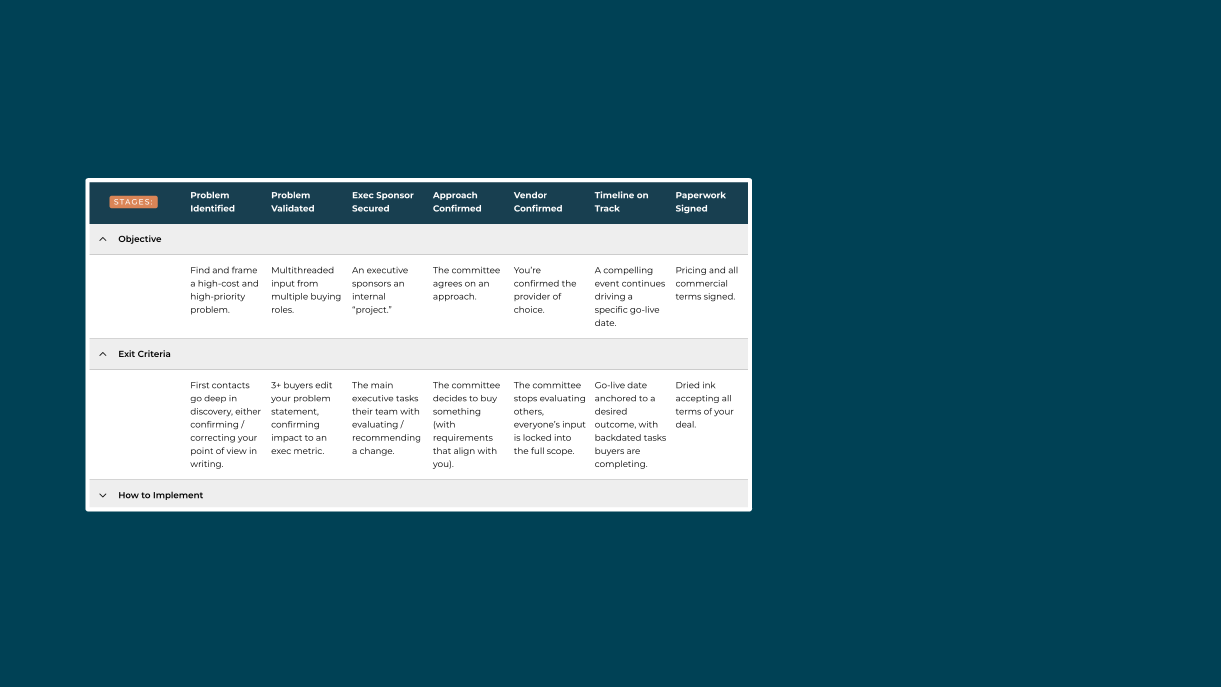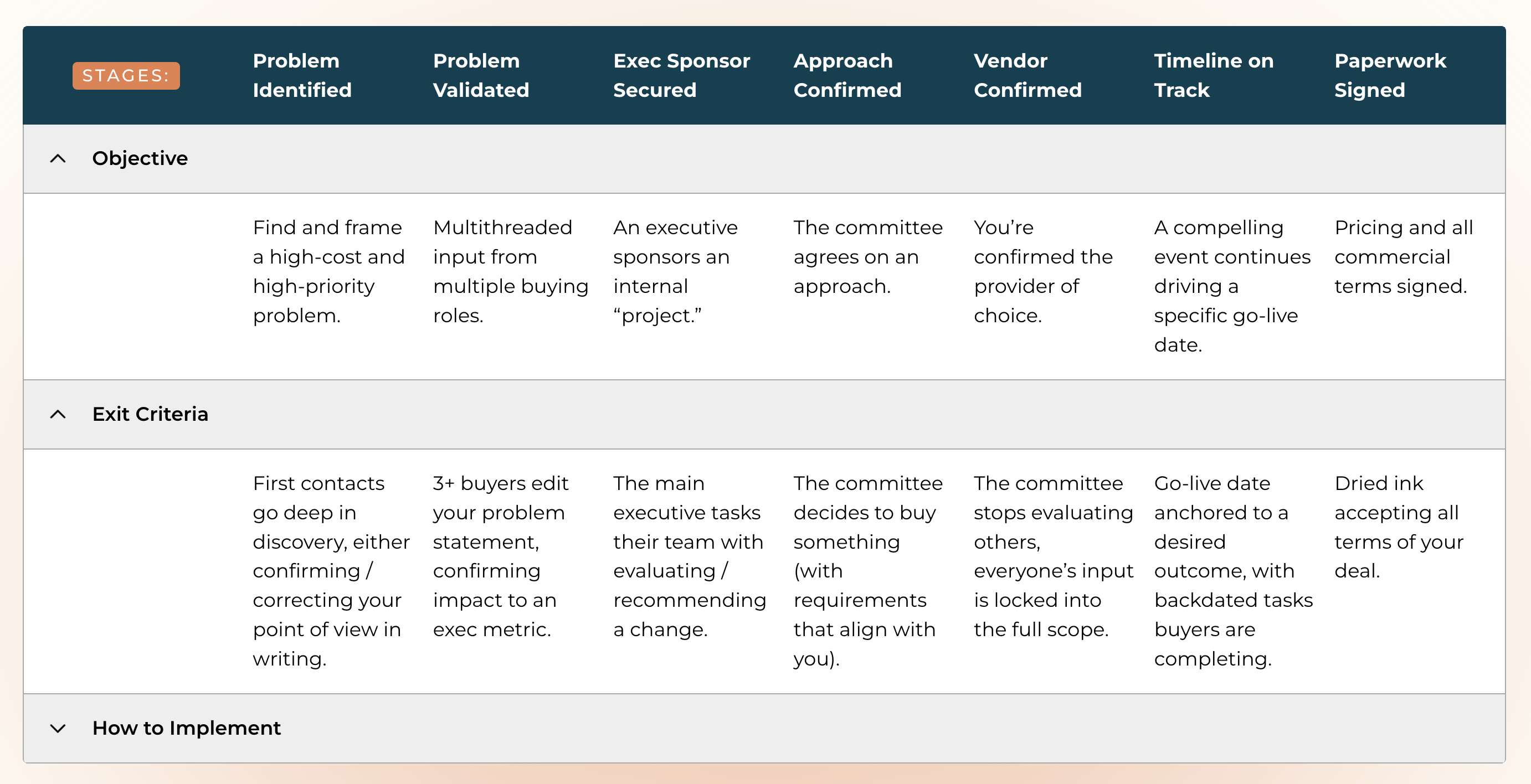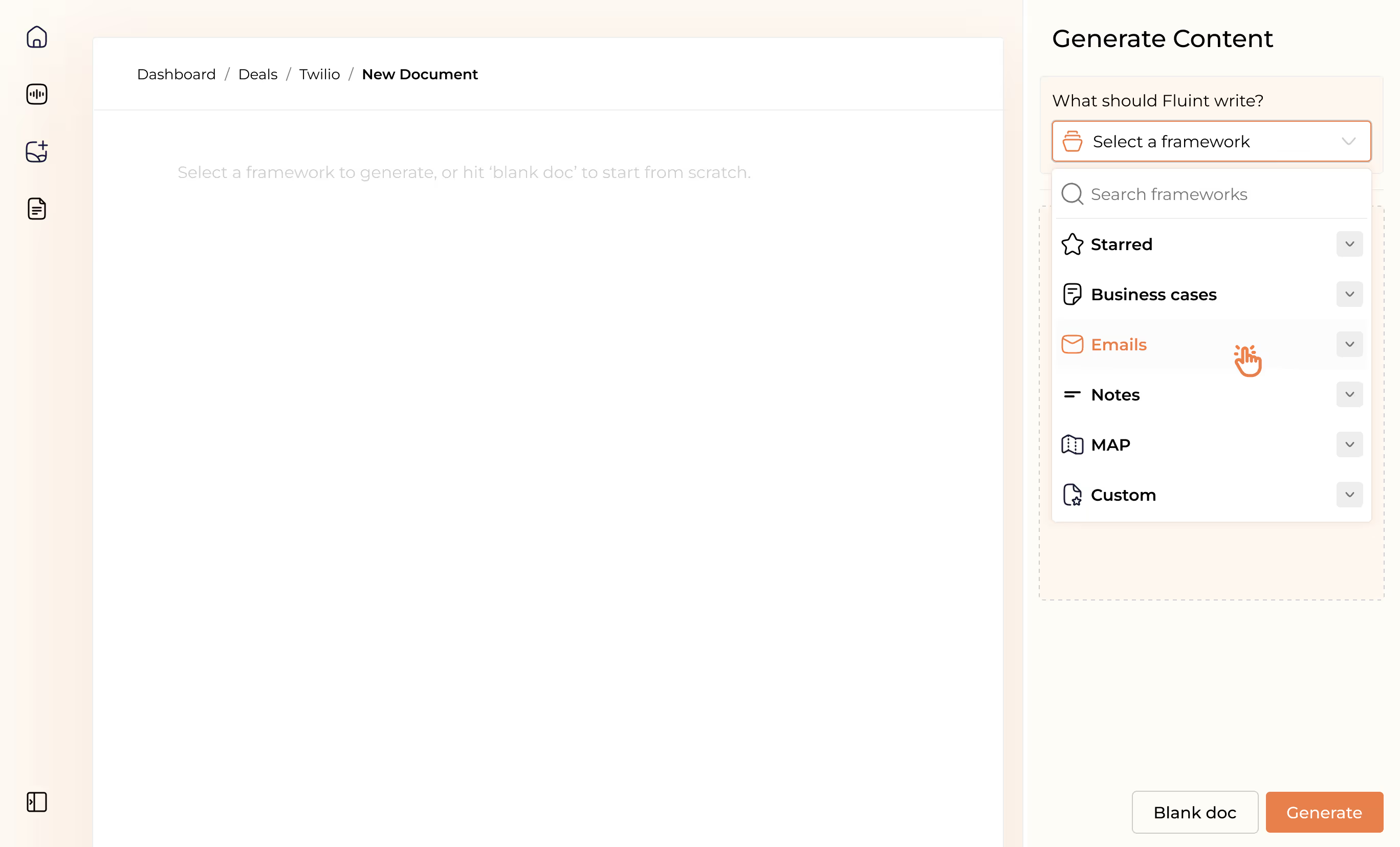Sales Process 2.0 Is Coming: Why Sales Teams are Fundamentally Rebuilding their Sales Process


There’s this parable David Foster Wallace made famous during his 2005 graduation speech at Kenyon College:
Two young fish are swimming along, and they happen to meet an older fish swimming the other way who nods at them and says, “Morning, boys. How’s the water?”
The two young fish swim on for a bit, then eventually one of them looks over at the other and goes “What the h*ll is water?”
The point of the story?
The most obvious and important realities are often the hardest to see and talk about.
I want to talk about one of these obvious, unseen realities:
The fact sales reps don’t close deals. Buyers do.
The Water Sales Teams Swim In
Because this reality’s forgotten — or maybe, never really understood in the first place — it shows up in the way most every sales team builds their process, playbook, and day-to-day operating model.
In other words, the “water” sales reps swim in.
Which is more like a mixture:
A blend of beliefs and behaviors that’ve become normalized over the past two decades, which continue to put sales reps at the center of the sales process.
(See? Nothing sounds off there, right?)
We’ll call the “water” most of us swim in “Sales Process 1.0.”
Which quite frankly, is backwards and counterproductive. Because it starts with the wrong premise and ignores the realities:
- Buying decisions are made during internal meetings — not sales meetings.
So sales reps are rarely in the room for the moments that create and kills deals. Your buyers are, however.
- You can remove sales reps from the buying process and still get a deal done.
But remove your buyer from the sales process and you’ve got nothing.
- Internal buying behavior is the only true measure of where a deal stands.
Yet sales stages focused on a seller’s activity only captures a fraction of a deal.
Example: sending out a proposal doesn’t tell you anything. (A sales activity.) Did the executive read it? Do they care? (A buying activity.)
So… how’s Sales Process 1.0 working out for you?
The Typical Sales Team’s Reality: Sales Process 1.0 by the Numbers
Ebsta & Pavilion’s 2024 State of Sales is a pretty fascinating read.
The one-sentence summary of 4.2 million opportunities across 530 companies is this:
The typical sales teams is swimming upstream, fighting against the current by spending, hiring, and doing more — to win less.
By the numbers:

So… why?
“Well, you know, the macro’s not great. Interest rates are up, spending’s down…”
Yada yada yada.
It’s a tempting soundbite. But I’ve yet to meet a sales leader who’s walking into a board meeting suggesting the macro environment is 100% of the reason why 69% of reps are missing quota in 2024 — even though quotas are 19% smaller this year.
Because that would raise a few eyebrows, and a few follow-up questions:
- Why are other sales teams they’re on the board of posting higher velocity this year — with relatively little changes in their product and target market?
PS, we’re releasing new data on this next week.
Signup here to be the first to see it.
- Why are some reps — who sell the same product, to the same customer, on the same team — producing 8.9X the sales velocity of everyone else?
.png)
We’re in a Massive “Sea Change” after a Decades-Long Shift
So what’s different about the teams and reps selling more this year? Well, they’ve noticed something about the water they’re swimming in:
Their mid-funnel looked the exact same as it did two decades ago.
It stayed static, while the reality of selling changed. (See above.)
While their top-of-funnel evolved to focus on buying behaviors (e.g. the rise of intent data and “signal-based selling)… from their first discovery call forward?
Same old, same old.
Sure, they sprinkled in some Conversation Intelligence. Better demos, better battlecards, better objection handling. But it all focused on the same premise:
The sales rep in the sales meeting.
Instead of taking Dory’s advice to keep on swimming right through a massive sea change, they did change. By re-approaching things from a different premise:
- Sales Process 1.0 was about sales reps in sales meetings.
- Sales Process 2.0 is about buyers in internal meetings.
Introducing Sales Process 2.0
On April 18th, we’re introducing Sales Process 2.0.
A detailed playbook showing you exactly how to dial up sales velocity by 10X — with data from sales teams who already have.
It’s a process that drives more revenue — with less people and pipeline.
Because here’s the thing: you can have it both ways. Growth, and efficiency.
Before the full playbook release, here’s a one-page summary you can reference to see where things are headed.

FAQ's on:
Why stop now?
You’re on a roll. Keep reading related write-up’s:
Draft with one click, go from DIY, to done-with-you AI
Get an executive-ready business case in seconds, built with your buyer's words and our AI.

Meet the sellers simplifying complex deals
Loved by top performers from 500+ companies with over $250M in closed-won revenue, across 19,900 deals managed with Fluint

Now getting more call transcripts into the tool so I can do more of that 1-click goodness.



The buying team literally skipped entire steps in the decision process after seeing our champion lay out the value for them.


Which is what Fluint lets me do: enable my champions, by making it easy for them to sell what matters to them and impacts their role.








